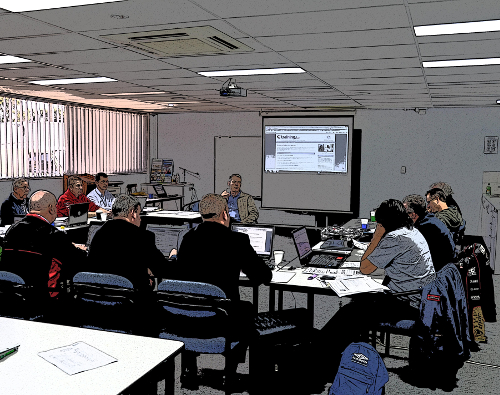Cultural sensitivities

It's not easy balancing the diverse needs and different sensitivities of a group of learners while you're trying to deliver a training program. Sometimes there are students in the class who are reluctant to declare their special needs or are hypersensitive about particular aspects of their make-up because they feel that it won't go down well with the other students.
In this sense, learners with LLN problems can often feel just as vulnerable to being picked on or treated with disrespect as people from other minority groups who suffer discrimination. So you need to apply the same 'inclusivity' principles with these learners as you would with anyone from a different ethnic background, religion or other characteristic that might be stigmatised.
There are no hard and fast rules on how to handle the classroom dynamics of having learners with normal LLN skills in the same group as others who are struggling. Every workplace is different, and every group of workers will have its own set of personalities, friendships and tensions.
In some groups, you may find that the general atmosphere is very supportive, and one or more of the 'normal' students are happy to help a classmate who is having trouble. This is often the case when participants know each other well, especially when the classmate is a relative or close friend.
In other groups, however, there may be all sorts of reasons why a struggling student is hesitant to make their LLN problems known. It could be because they are shy by nature, or are already the subject of workplace bullying, or they don't want to reveal a 'weakness' to their workmates. These cases need to be treated with care.
The best way to maintain an inclusive atmosphere in a mixed group of participants is to avoid drawing attention to learners who are having problems while the whole group is together. The case study below presents some examples of how you could incorporate LLN support into your general delivery style. If you find that other support strategies or specialist assistance will be needed, you should always discuss these issues separately with the individuals concerned, away from the rest of the group.

Case study
Read through the case study below, and then answer the questions.
Sue is a trainer who has been asked to deliver training to a group of workers employed by manufacturing company. The program includes a competency relating to machinery operation, quality control and the completion of production forms.
The site manager has told Sue that he is having trouble getting the workers to fill in the forms accurately. Although all of the workers speak English as their native language, Sue suspects that their literacy skills will probably cluster around ACSF levels 2 and 3. This is normal in her experience for these sorts of learners.
When Sue delivers the training session on quality control, she discusses the production standards involved and then hands out a blank form to each participant. She screens an electronic version on the wall using a data projector hooked up to her laptop computer.
The whole group works through the form, from top to bottom, with Sue filling in a sample day's production results on her screened version. This lets everyone see the form being completed with all necessary information and the correct use of abbreviations and technical terms.
Sue asks everyone to fill in their own hard copy with the same information as they work through the form. The faster students write the details down quickly, without needing to double-check their entries.
But the slower students pay more attention to Sue's use of symbols and words, and copy the entries carefully from her screened version.
To keep the faster students occupied while the slower ones are still writing, Sue asks them questions about the purpose of each entry, which they answer verbally. When she can see that all other students have caught up, she moves on to the next entry.
After the lunch break, Sue divides the students into pairs. She gives each person a blank form and asks them to go out into the factory to complete the forms in pairs while they watch the products coming down the production line. Their task is to work together to determine the quality standards and then individually write the correct entries onto their own form.
By this time, Sue knows which students have more trouble with their writing, so she makes sure she has paired off each poor writer with a good writer.
When they have finished, they come back into the training room to discuss the results.
Questions
How has Sue embedded literacy support into her training? Write a brief list of the main techniques she has used.
How has Sue managed to handle the differing literacy and numeracy levels of the students in her group?
When Sue pairs off the students, she makes sure that each of the poor writers is paired with a good writer. What are the advantages of using this technique - that is, what is she hoping to achieve?
What are the disadvantages of the above technique - that is, what does Sue have to be careful to avoid?
What other techniques could Sue use to help reinforce the learners' LLN skills while they undertaking the training?

